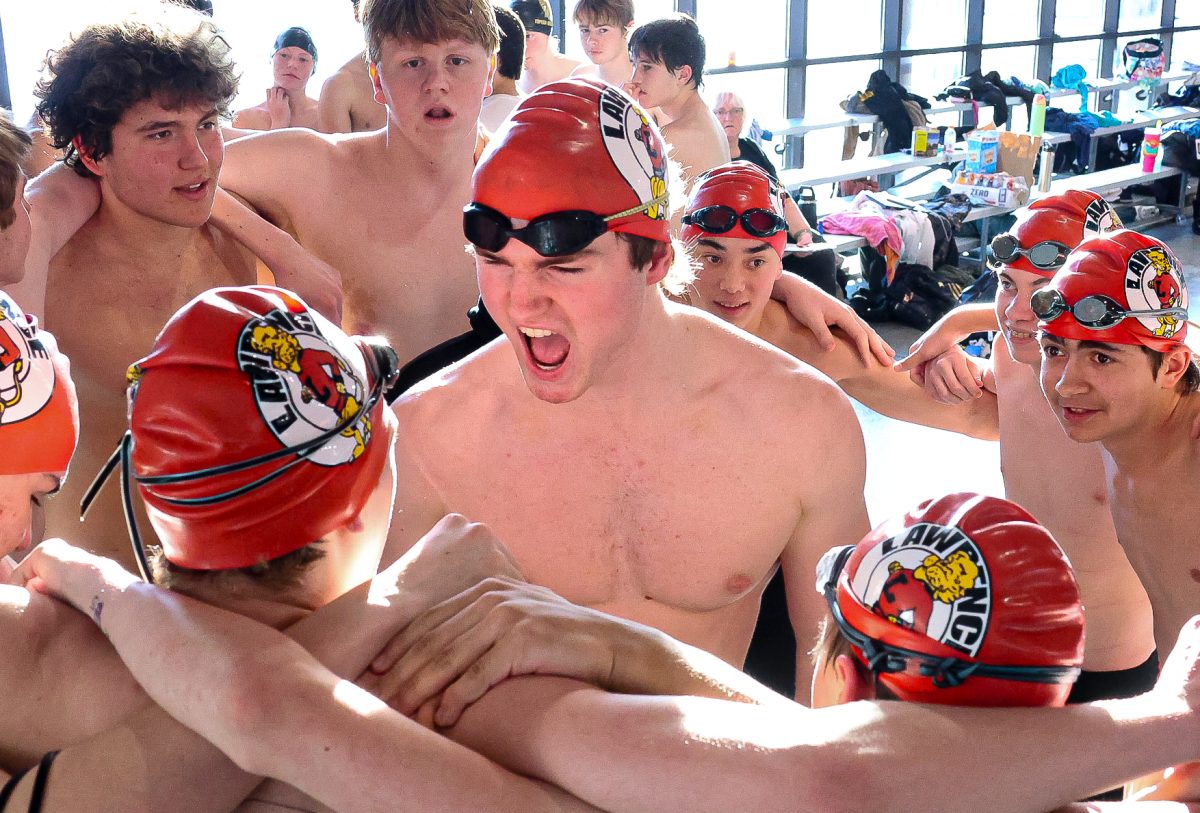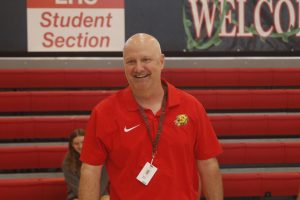Advanced ceramics and culinary students work together to create hand-made plates
January 16, 2019
On Thursday, December 13, a three-course lunch was hosted by the chef Rick Martin and his Advanced Culinary class at the College and Career Center. Martin is also the head chef and founder of the restaurant Limestone in downtown Lawrence.
Advanced Ceramics students and administrators from the school district were in attendance with a few Ceramics students as servers at the event. Bracker’s Good Earth Clays provided financial support for this event.
Ceramics students from LHS collaborated with the Advanced Culinary students to created plates to compliment the dishes over the last month and a half.
The project first came about through an idea ceramics and jewelry teacher, Deena Amont had.
“It started based on something I had seen a long time ago,” Amont said. “I’ve seen professional ceramics artists have worked with professional chefs in the past to do collaborative projects similar to what we’re doing. Maybe a situation where a ceramics artists would make a set of serving ware or dinner ware or plates to accompany and compliment a particular meal made by a professional chef.”
Beginning in October, it’s been a long process for the ceramics students. Making about 90 plates total for around 30 guests for a three-course meal.
“It’s been more time consuming than what I would have hoped, just because you don’t get to do as many projects,” senior Baylee Unruh said. “I think the end goal and what we get to do with it is like fun and exciting.”
The process started with ceramics students visiting the College and Career Center. After making some prototypes, the culinary students visited LHS and find what they found out what they liked and didn’t like for the final product.
“I think it was kind of fun to make all the different prototypes and then we had the advanced culinary kids come here for one of their field trips, and they picked which one they liked the most,” Unruh said. “It was fun to make all the different ones and seeing which one’s worked best with the food.”
The ceramics and culinary classes decided to go with a more natural autumn theme. The ceramics students were given some creative freedom.
“We wanted to do something natural and seasonal. When we first met with the ceramics students, they had a couple of examples of some autumn designs, both with glaze and the finish,” Martin said. “The center piece, and the entree plate is in the shape of a leaf and we kind of thought that would be fun to play off of and it kind of just went from there. We wanted to leave it almost completely up to the ceramics students with my class just making some suggestions and giving the feedback and that’s kind of just the way it turned out.”
Practicality and simplicity were important to the culinary students.
“We wanted a consistent theme,” junior Chloe McNair said. “We wanted the color to be the same and then we didn’t want anything to sharp, because then it’s like a danger hazard. We didn’t want anything too thin, because then it could chip and break easily and that would contaminate the food. We didn’t want colors that would be off-putting, we wanted it to match well with the food we had.”
“I feel that I’ve learned how to stay on schedule and prepare myself for how quickly it’s going to go,” McNair said. “Chef said, ‘You can rest later, you really got to do this now. There’s really no time to take a breath until after it’s finished. You really have to be involved 100% of the time and then after it’s done you can celebrate.’”
Plating is very important in the food world. Having this opportunity with the ceramics class was hard to pass up for Advanced Culinary Teacher at the College and Career Center and founder and head chef of Limestone, Rick Martin.
“We focus on the term plating and how to make food look natural and beautiful at the same time,” Martin said. “Utilizing different techniques to make the food, eye appeal and different knife cuts and cooking techniques that go into that as well to bring out different colors and textures.”
Through this project students not only gained experience, but important life skills. Students developed skills such as problem solving, time management, and how to work cooperatively with others.
“I think often in high school, students work as very individualized but outside of high school, most learning doesn’t take place that way, say in a work environment for example,” Amont said. “Learning and processing information and doing work doesn’t usually happen on an individual basis, it usually happens in groups.”
Collaborations between two groups of students at a high talent level do not happen often. Ceramics and food are very different, but they were able to collaborate and work together to create a rewarding final product.
“Mostly [it is important] because it gets so many different students involved from two different sides of the career perspective,” Martin said. “I’ve never seen a particular project that engages so many different students from a talent level, but doing completely separate things.”














